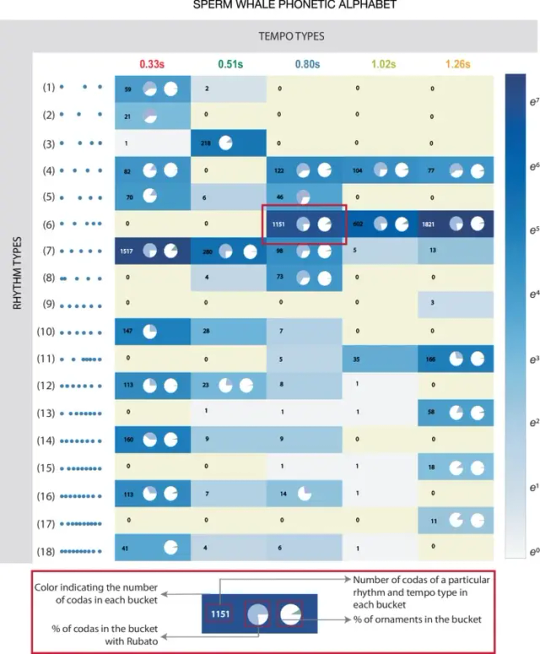#vocalisation
Explore tagged Tumblr posts
Text
Mooing crocodiles
Some interesting news on croc vocalisation I completely forgot to talk about. A recent paper on the West African Dwarf Crocodile (Osteolaemus tetraspis) revealed a before unknown diversity in noises it is able to produce. By recording captive animals and comparing the noises made by them to recordings suspected to be those of wild individuals, researchers could identify FOUR new types of calls not seen previously in crocodilians.
These calls range from low frequency sounds like "drums" (short) and "rumbles" (long) to more higher frequency sounds like "gusts" and what the scientists refer to as "moos".
Though the paper itself didn't include sound files (to my knowledge), you can hear the "mooing" sound and some others around the 16 minute mark in this here podcast Podcasts | Weekly: Antimatter falls down; Virtual healthcare comes with a price; What’s causing Europe’s insect apocalypse? | New Scientist
Croc vocalisation is a generally underappreciated field of research that usually gets little attention, no doubt because many pass of crocodiles as silent animals when really they can be quite vocal and have a surprisingly broad range, small forms like the dwarf crocodiles especially. This can even be seen in this study, as the wild sounds were only recorded on "accident" by a study focused on elephants.
Also for those unfamiliar with dwarf crocodiles, here's an image of one.

#dwarf crocodile#west african dwarf crocodile#crocodile#crocodilia#osteolaemus#osteolaemus tetraspis#vocalisation#mooing crocodile#science#herpetology#croc
428 notes
·
View notes
Text
youtube
Just a video containing some fun, largely speculative, and quite cool dinosaur, marine reptile, and pterosaur noises that I ran across.
13 notes
·
View notes
Video
youtube
Babi, 1977, Milford Graves
6 notes
·
View notes
Text
But, when you make a guy feel safe enough to do this in front of you, coaxing them to drink more, to touch themselves, and jiggle about... knowing you WILL give them permission to go, right there.
Seeing the relief on their face and the pretty, gasping puffs of breath.
Touching their damp crotch with tender hands and letting them guide you into getting them off. When they finally absolutely ruin their boxers with another mess and a satisfied grin...
Pretty boys with vocal tells and natural urges...It's so beautiful.
I just love when men wiggle around and squeeze their thighs together so harshly, in an attempt to hold back themselves and not let any spurt of the hot liquid escape. Their hands oftenly shoving into their pockets, moving around so desperately that they can't let go now. They won't even dare to look you in the face, too scared that you'd make a fool out of them if you catch a glimpse of their truly desperate expression. They just stand there, too afraid and nervous to ask you again for permission, after an already negative response. But then, it just happens. At first, they try to hold back and a gasp escapes from their mouth in the process, but as they notice it won't stop they get gushed by the relaxing sensation of finally relieving after a risky and long hold. So, they just give up and let themselves get absorbed into it. A last stream could be seen coming from beneath their pants and trailing down on their already soaked leg, just helping the puddle from underneath themselves enlarge. They are now even more embarrassed and nervous, and all they can do is let their lips quiver and feel a tear drip down on their cheek.
473 notes
·
View notes
Text
Me As The Vocalist 🎤🎶🎵💖💗🎀🐭🐁

1 note
·
View note
Text

Here I am holding an Australian magpie. One of Australia's most accomplished songbirds. They sometimes sing at night (my kind of bird) and have an array of complex vocalisations.
I am not a magpie but I too, sing. I am also pretty complex.
DARK NATURE drops 31.10.23
7 haunting biographical fairytales 🎶📖
#dark nature#dark folk#piano vocal#singer songwriter#piano#baroque pop#kate bush#michaela betts#new music#tori amos#australian magpie#songbird#vocalisation
1 note
·
View note
Text


i just wanted to hold you in my arms
#they haunt me actually#i read a fic a few days ago where ww was a ghost and it was so GOOD and painful and it's living rent free in my mind since#as usual im shit at vocalising my brain rot in english so. just know that im thinking abt them constantly#trigun#trigun 1998#trigun maximum#it's a mix lol#vash the stampede#nicholas d. wolfwood#vashwood#my art#trigun fanart#vashwood fanart#trigun spoilers#trimax spoilers
4K notes
·
View notes
Text
Kindly asking Vessel to bring the piano only version of Sugar back
Credits: @/jaymw93 on tiktok
#AND DO YOU HEAR THE LADIES??#SWOONING#and his vocalisations??#dude#I haven't stopped thinking about this clip#like he sounds so crisp#Mr Token the first bring the piano version back pretty please#sleep token#st#sundowning#sugar (song)#sugar#vessel#vessel singer#vessel sleep token#vesselettes#esperas
379 notes
·
View notes
Text

"the only time i feel i might get better, is when we are together."

"come here."
letting her eyes scan over his features, she takes all of him in, the very same ones she’s already committed to memory many moons ago. as she traces his cheek with the pad of her thumb, she can’t help the corners of her lips lifting into a soft smile, locking eyes with his and getting lost in the universe held in twin twilight orbs. “what do you see?” tobio whispers, cool breath fanning against the flush apples of her cheeks as he rests his hands on her waist and pulls her closer. “you, i just see you.”

© comm by luvluvluv06 (twt). please do not reupload (rbs are ok!), copy or download.
#˚ 𝜗𝜚˚⋆。☆ : self ship !#ᡣ𐭩 : citobi#screaming into the void because this is so pretty i yelled when i got the comm back like verbally vocalised that yell#my lil bloobery boy (that's a foot taller than me)#i am very much on my tiptoes and he is hunching to get down to my level#dividers: @/anitalenia#kageyama tobio#haikyuu#hq
57 notes
·
View notes
Text
Can we address the fact that some people think Colin was unnecessarily cruel to Penelope and did not show her his love when in fact he loved her so deeply he could not be angry at her the way he would/might have wanted to??? Like can we just address this for an instant? How it is because he loved her that he stayed in their relationship, in this marriage, despite the way he was/they were hurting. He could have left if he so chose to.
And don’t give me the “but they’ve entrapped each other and she was pregnant”. She offered him an annulment without being asked to because that is how much she loves him. You mean to tell me that that same woman wouldn’t have agreed to stop all of this if he so chose and expressed? And you mean to tell me the man who has been disregarding the rules of society and was raised on the idea of true love wouldn’t have left if he really wanted to? Especially when it was so easy for him to leave? Expose her, say you’ve been cheated and lied to and boom the man is free. That would have been cruel, that would have been extremely low of him, that would have been out of character for him. No, instead he chose to stay because he loves her despite of everything. So don’t tell me the man is not in love in these last episodes because if anything he’s never been so in love.
#in this essay i will#😂😂😂#I’m not saying he’s not being pissy in his attitude towards her because he totally is#but also to say that he does not love her that he does not show love to her#sorry this is bugging me#😂😂#needed to be vocalised#polin#bridgerton#bridgerton season 3
77 notes
·
View notes
Text
one foul thing karl did to his wives was to request separate yearly portraits of him and devyn that would be displayed in different institutions around the kingdom, as well as for sale for the common folk (in some crazy idea to “connect” with his people) but never of his wives and if one of them would comment about it, his answer is that devyn is a political figure
#i feel like cordelia would be only one to vocalise it lol#and beatrix would display only devyn portrait in one of her rooms#devyn kang#diabolik lovers oc#karlheinz sakamaki#diabolik oc#diabolik lovers#karlheinz#cordelia sakamaki#beatrix sakamaki#christa sakamaki
32 notes
·
View notes
Text
A phonetic alphabet for sperm whales proposed by Daniela Rus, Antonio Torralba and Jacob Andreas.
The open-access study published in Nature Communications titled 'Contextual and combinatorial structure in sperm whale vocalisations', has analysed sperm whale vocalizations and as part of that, a phonetic 'alphabet' has been proposed for them.
So cool. Dolphins next please.

MIT news also did an article on this
#whale#sperm whale#cetacean#language#animal language#animal vocalisation#click language#clicks#inspiration#conlang#language creation#spec bio#speculative biology#speculative evolution#speculative worldbuilding#speculative fiction#inspo#machine learning#ai#communication#phonetic#alphabet#so cool#cool shit#nature communications
62 notes
·
View notes
Text


S3-R4PH, my robotsona / OC. Wetware blood machine. Normally has legs.
Close-ups below the cut.



#art#robot oc#robotsona#oc#oc art#digital artist#digital art#robot#tw blood#seraph's simulacrums#fun fact the audio visualiser thing it has for a face is meant to resemble eyes and a mouth#the top set of bars moves in the direction it’s looking#the bottom ones are meant to look like fangs and move when it vocalises#(it cannot speak)#it usually had legs i’m just too lazy to draw them since drawing freaky digitigrade legs at this angle are evil#i am very very proud of this drawing.
28 notes
·
View notes
Note
Overstimming soundwave til his vocalizer cuts out and all he can do is squirm
Soundwave edging himself one too many times until all the charge in his system shorts out his vocaliser, Soundwave who has to squirm silently until he can get someone to give him permission to overload, Soundwave climbing into Megatrons lap trying to communicate how desperate he is even though he can’t make a single noise, Soundwave who’s only sign of overload it the shaking of his thighs and how desperately he clings to Megatrons shoulders as he silently grinds down on his lap
#the Soundwave edging chronicles go crazy#he can’t reset his vocaliser until the charge is gone or something idk#/nsft#valveplug#soundwave#ask
48 notes
·
View notes
Text

[ID: the "Love is love" meme with persona 5 royal and madoka magica characters edited on top. Rumi and Takuto Maruki's sprites are edited together for the "regular couple", the art of Akechi Goro and Joker playing chess in the bad ending is assigned as the "yaoi couple", and a screenshot of Madoka Kaname and Homura Akemi sitting in a flower field turning purple from Rebellion is assigned as the "yuri couple". Edward Elric from fullmetal alchemist gives a thumbs-up, and says "I See No Difference" followed by "all of you have loved someone who completely disappeared from your existences/lives, leaving you mourning them even if they aren't dead. This will lead you to rewriting reality so that they will finally be happy in a life that has continuously mistreated them. Even if you erase your relationship in the process. Even if they end up hating you for what you've done. By doing so, you have taken God's power into your own hands. Love is love !" End ID]
I've been having. thoughts lately
#p5r#pmmm#madohomu#akeshu#shuake#persona 5 royal#madoka magica#anyway. I have been having a Lot of pmmm brainrot#these thoughts were already in my head but I need to vocalise them so so so bad#p5r spoilers#pmmm spoilers#p5 spoilers#pmmm rebellion spoilers#nooty lore
325 notes
·
View notes
Text
Thinking the rds dragons have only vestigial eyes or just basic bad eyesight.. in the integration of dragon society (electromagnetic waves-based) and human society (mostly visual) it means each member of the pair acts as an interpreter and assistant for the other, in their respective methods of communication... get your lil human pal to transcribe a letter for you, get ur dragon to confer with the flock via radio waves, etc
#the dragons also have no way to audibly vocalise though they can hear stuff#rds#u know I've already forgotten what rds stands for
36 notes
·
View notes